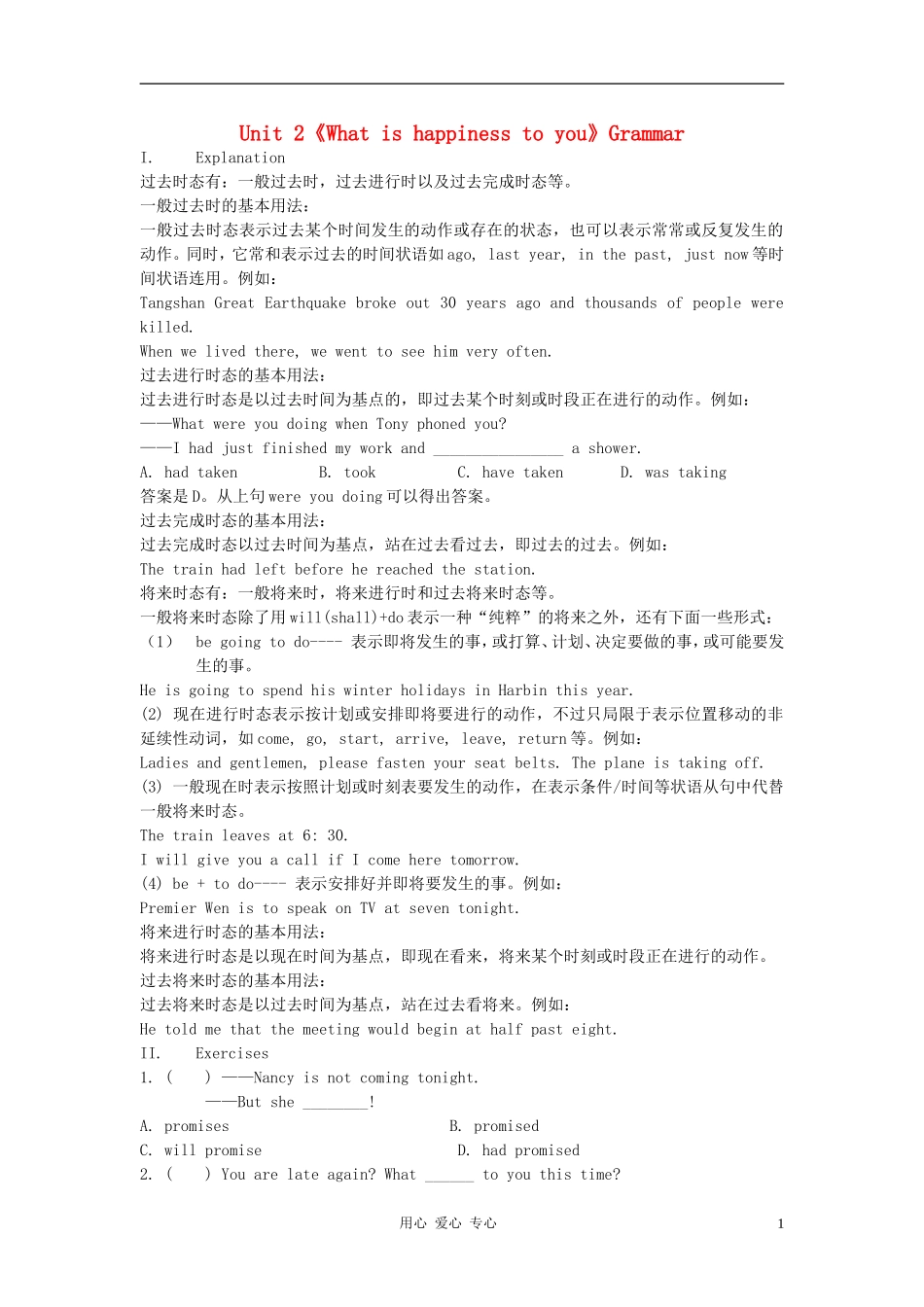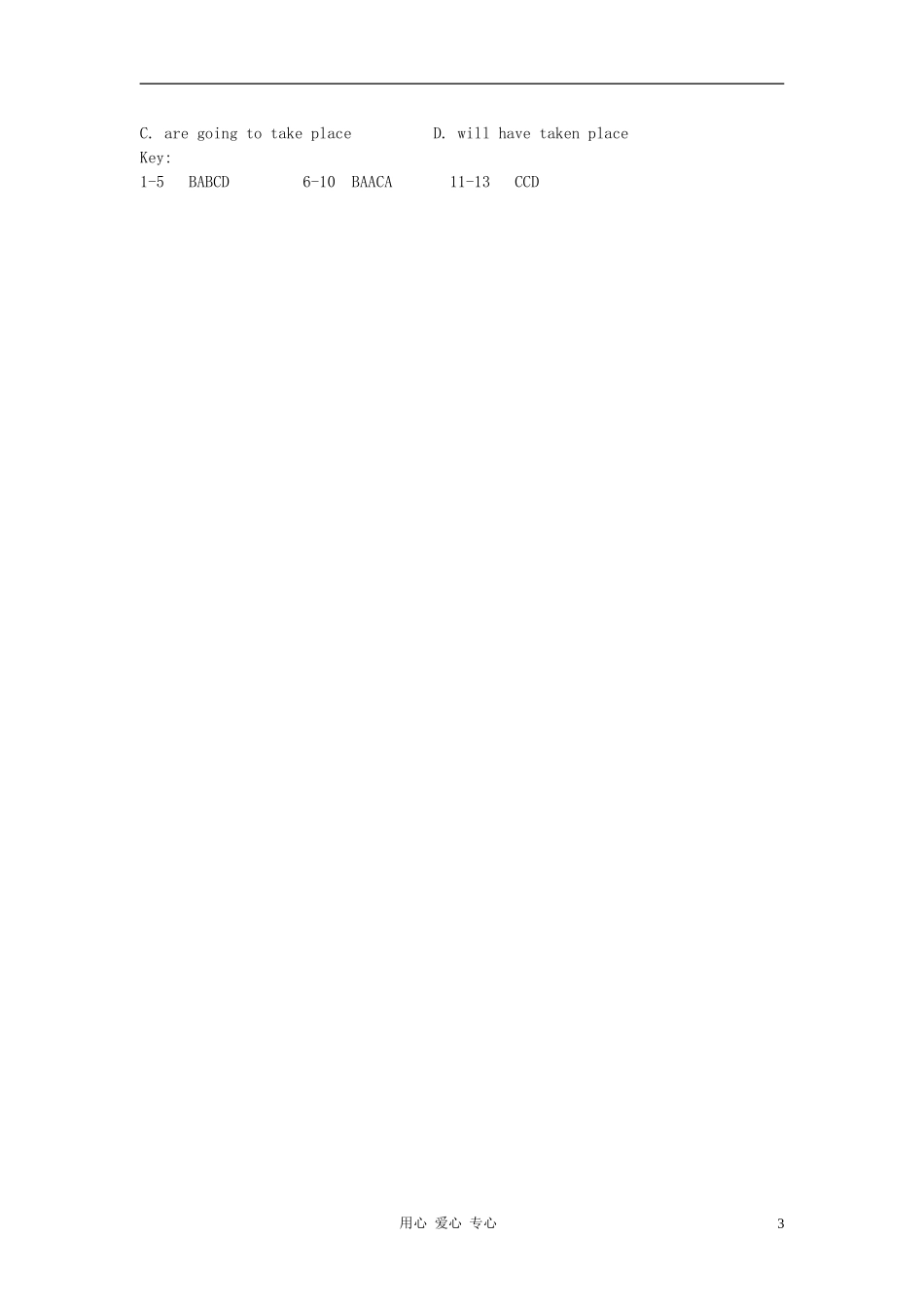Unit 2《What is happiness to you》GrammarI.Explanation过去时态有:一般过去时,过去进行时以及过去完成时态等。一般过去时的基本用法:一般过去时态表示过去某个时间发生的动作或存在的状态,也可以表示常常或反复发生的动作。同时,它常和表示过去的时间状语如 ago, last year, in the past, just now 等时间状语连用。例如:Tangshan Great Earthquake broke out 30 years ago and thousands of people were killed.When we lived there, we went to see him very often.过去进行时态的基本用法:过去进行时态是以过去时间为基点的,即过去某个时刻或时段正在进行的动作。例如:——What were you doing when Tony phoned you?——I had just finished my work and ________________ a shower.A. had taken B. took C. have taken D. was taking答案是 D。从上句 were you doing 可以得出答案。过去完成时态的基本用法:过去完成时态以过去时间为基点,站在过去看过去,即过去的过去。例如:The train had left before he reached the station.将来时态有:一般将来时,将来进行时和过去将来时态等。一般将来时态除了用 will(shall)+do 表示一种“纯粹”的将来之外,还有下面一些形式:(1)be going to do---- 表示即将发生的事,或打算、计划、决定要做的事,或可能要发生的事。He is going to spend his winter holidays in Harbin this year.(2) 现在进行时态表示按计划或安排即将要进行的动作,不过只局限于表示位置移动的非延续性动词,如 come, go, start, arrive, leave, return 等。例如:Ladies and gentlemen, please fasten your seat belts. The plane is taking off.(3) 一般现在时表示按照计划或时刻表要发生的动作,在表示条件/时间等状语从句中代替一般将来时态。The train leaves at 6: 30.I will give you a call if I come here tomorrow.(4) be + to do---- 表示安排好并即将要发生的事。例如:Premier Wen is to speak on TV at seven tonight.将来进行时态的基本用法:将来进行时态是以现在时间为基点,即现在看来,将来某个时刻或时段正在进行的动作。过去将来时态的基本用法:过去将来时态是以过去时间为基点,站在过去看将来。例如:He told me that the ...


